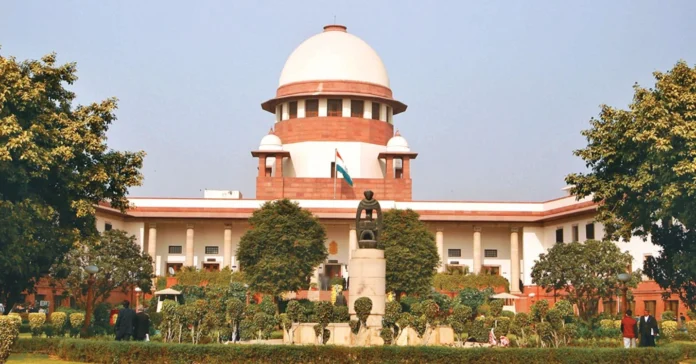By Sanjay Raman Sinha
The long-running legal battle over India’s tribunals reached a new flashpoint as a rare, gloves-off courtroom exchange unfolded in the Supreme Court. In two heated hearings, a bench led by the Chief Justice of India (CJI) BR Gavai and Justice KV Chandran openly questioned the Union government’s urgency—and intent—in pushing ahead with the contentious Tribunals Reforms Act, 2021, which is facing a fresh challenge from the Madras Bar Association (MBA).
Tensions spiked when Attorney General (AG) R Venkataramani sought an adjournment. The CJI, set to retire on the November 23, 2025, asked pointedly whether the government preferred the matter to be heard after his retirement. The AG quickly withdrew his request and apologized, but the moment revealed much more than procedural friction. It underlined a deeper struggle: the government’s persistent attempt to tighten its hold over tribunal functioning, and the Supreme Court’s constitutional obligation to resist executive encroachment.
At the heart of the dispute is the MBA’s challenge to the Tribunals Reforms Act, 2021, which reintroduces provisions earlier struck down by the apex court—including a four-year term for tribunal members and a minimum appointment age of 50. The MBA argues that these provisions erode judicial independence, violate the separation of powers, and create a legislative override of judicial verdicts. This case marks yet another round in the MBA’s long-standing campaign to safeguard tribunals from executive dominance.
MBA’S KEY OBJECTIONS
The petitioners contend that the Act contravenes prior Supreme Court rulings by:
1. Imposing a 50-year minimum age for appointments.
2. Permitting the search-cum-selection committee to recommend two names for chairperson, enabling executive preference.
3. Fixing a four-year tenure—shorter than what the apex court had mandated.
Further, the MBA alleges arbitrary selection practices:
- Candidates on waitlists were preferred over higher-ranked candidates.
- Intelligence Bureau reports containing adverse remarks were used to veto candidates without being shared with the selection committee, resulting in what the MBA terms “arbitrary cherry-picking”—a phrase notably used by the apex court itself in 2021 during similar hearings.
In one example from 2018, involving 21 judicial vacancies at the Income Tax Appellate Tribunal, 16 candidates were selected from the merit list, but six came from the waitlist, allegedly bypassing more qualified contenders.
WHY TRIBUNAL INDEPENDENCE MATTERS
Tribunals are not merely alternative forums; they handle complex and high-stake disputes in fields such as taxation, company law, the environment, and administrative service matters. The Supreme Court has repeatedly held that the independence of these bodies is part of the Constitution’s basic structure.
In L Chandra Kumar vs Union of India (1997), the Court ruled that tribunals are subject to the scrutiny of High Courts and cannot operate as parallel judicial structures. Their sensitivity and the value of matters adjudicated—multi-crore tax disputes, major environmental clearances, service matters involving armed forces personnel—make them a recurring battleground between the executive, which is often the primary litigant, and the judiciary, which must protect their autonomy.
VACANCIES AND SYSTEMIC STRESS
Prolonged friction has also translated into operational paralysis. As of December 2022, many tribunals faced severe shortages:
- NCLT: 24 of 32 posts vacant.
- AFT: 24 of 34 vacant.
- ITAT: 18 judicial vacancies out of 63
- Railway Claims Tribunal: both vice-chairmen and 16 of 20 judicial positions unfilled.
- Industrial Tribunals: only 13 presiding officers against a sanctioned strength of 22.
These vacancies have crippled case flow and delayed critical adjudications.
GOVERNMENT’S ARGUMENT: EFFICIENCY AND CONTROL
The Union government maintains that since tribunals are statutory bodies created by Parliament, they must fall within the executive’s administrative domain. It argues that uniformity, efficiency, transparency, and accountability require greater central control, and that the Tribunals Reforms Act embodies these goals. Critics, however, view tribunals as a cushioned post-retirement landing spot for judges—a perception the Court has attempted to counter by advocating longer tenures that are not dependent on government goodwill.
Yet the reality is more complicated. As Justice BV Nagarathna observed in a hearing on the National Green Tribunal: “Former Chief Justices and High Court judges are treated without dignity… even for stationery, they have to keep requesting. The most rickety car in your department is given to a tribunal chairman.”
Here lies the paradox: the very executive that may appear before a tribunal also controls the perks, staff, and facilities of its presiding officers—creating subtle, but significant pressures.
WHAT’S AT STAKE
With tribunals handling matters that directly affect government interests—environmental clearances, tax litigation, service disputes, and defence personnel grievances—the temptation for executive control is undeniable. Conversely, the Supreme Court’s mandate to protect constitutional independence is clear.
The outcome of this legal confrontation may well become a landmark in defining the balance of power between the judiciary and the executive.
HISTORY OF CONFLICT
2017: The Finance Act empowers the centre to frame rules for tribunals, which is later struck down by the Supreme Court in the Rojer Mathew case (2019) for undermining judicial independence.
2020: The centre issues new tribunal rules, which are challenged by the Madras Bar Association (MBA). The Supreme Court recommends a five-year tenure for ·tribunal members to ensure independence.
April 2021: The centre passes an ordinance setting a four-year tenure and a minimum age of 50 years for tribunal appointments.
July 2021: The Supreme Court strikes down the ordinance’s provisions as arbitrary and against the principle of separation of powers.
August 2021: Parliament passes the Tribunals Reforms Act, re-enacting the same provisions struck down by the Supreme Court.
Ongoing: The Supreme Court hears petitions challenging the Act, with the MBA arguing it undermines judicial independence and the government defending it as a policy decision within Parliament’s authority.


